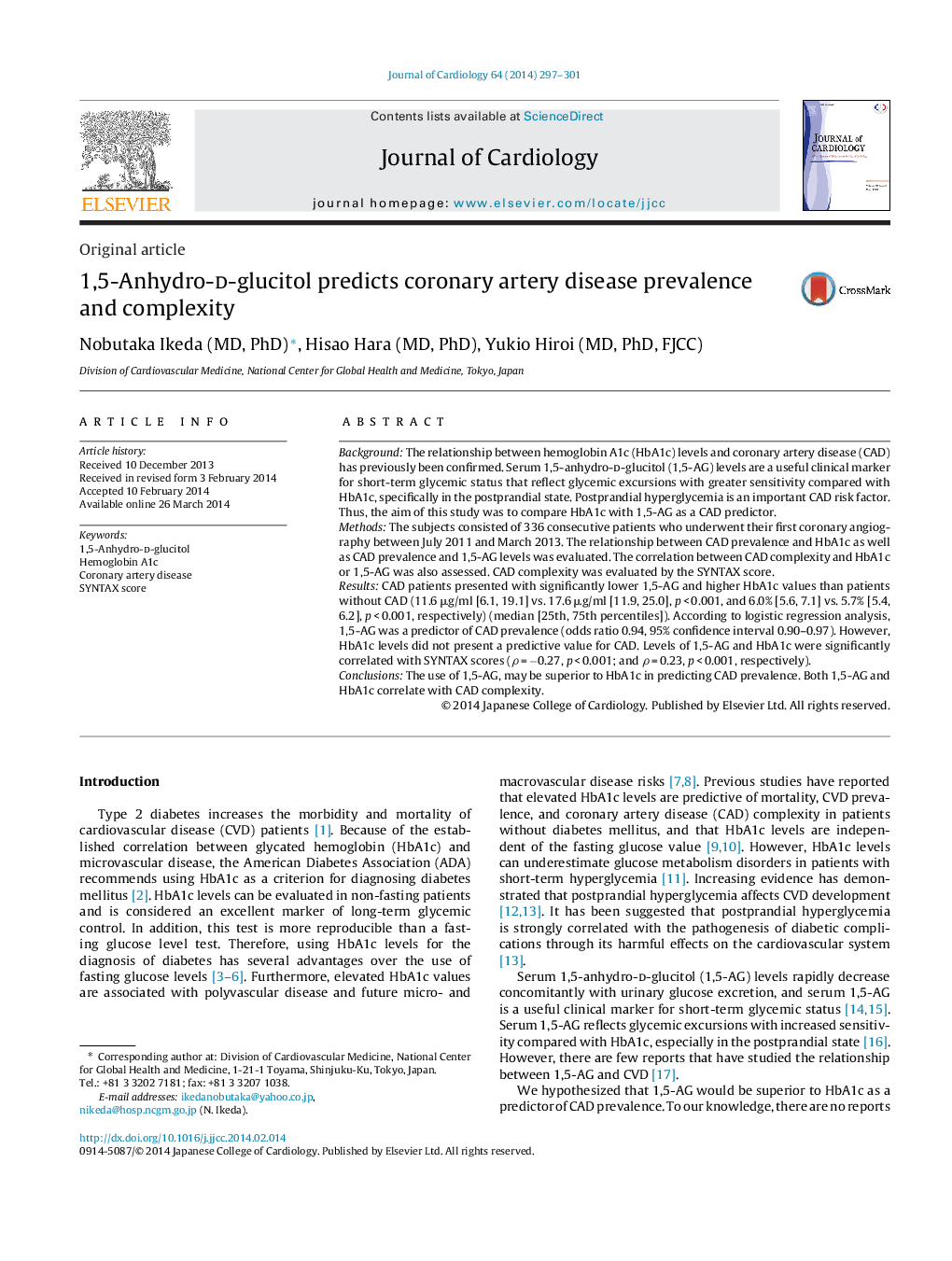| کد مقاله | کد نشریه | سال انتشار | مقاله انگلیسی | نسخه تمام متن |
|---|---|---|---|---|
| 5984255 | 1178539 | 2014 | 5 صفحه PDF | دانلود رایگان |

BackgroundThe relationship between hemoglobin A1c (HbA1c) levels and coronary artery disease (CAD) has previously been confirmed. Serum 1,5-anhydro-d-glucitol (1,5-AG) levels are a useful clinical marker for short-term glycemic status that reflect glycemic excursions with greater sensitivity compared with HbA1c, specifically in the postprandial state. Postprandial hyperglycemia is an important CAD risk factor. Thus, the aim of this study was to compare HbA1c with 1,5-AG as a CAD predictor.MethodsThe subjects consisted of 336 consecutive patients who underwent their first coronary angiography between July 2011 and March 2013. The relationship between CAD prevalence and HbA1c as well as CAD prevalence and 1,5-AG levels was evaluated. The correlation between CAD complexity and HbA1c or 1,5-AG was also assessed. CAD complexity was evaluated by the SYNTAX score.ResultsCAD patients presented with significantly lower 1,5-AG and higher HbA1c values than patients without CAD (11.6 μg/ml [6.1, 19.1] vs. 17.6 μg/ml [11.9, 25.0], p < 0.001, and 6.0% [5.6, 7.1] vs. 5.7% [5.4, 6.2], p < 0.001, respectively) (median [25th, 75th percentiles]). According to logistic regression analysis, 1,5-AG was a predictor of CAD prevalence (odds ratio 0.94, 95% confidence interval 0.90-0.97). However, HbA1c levels did not present a predictive value for CAD. Levels of 1,5-AG and HbA1c were significantly correlated with SYNTAX scores (Ï = â0.27, p < 0.001; and Ï = 0.23, p < 0.001, respectively).ConclusionsThe use of 1,5-AG, may be superior to HbA1c in predicting CAD prevalence. Both 1,5-AG and HbA1c correlate with CAD complexity.
Journal: Journal of Cardiology - Volume 64, Issue 4, October 2014, Pages 297-301